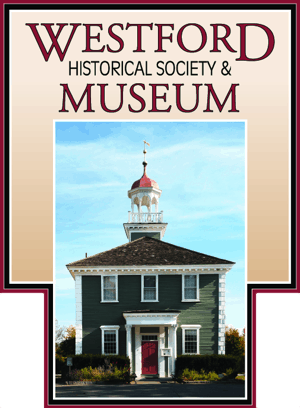Each Massachusetts town has its Revolutionary War heroes. Some served from the first day of the conflict, while others, due to either distance or age would serve later. A relative few can be found in the many history books that have been written since, and in most cases the same small group is found throughout the narrative of those early days of our nation. It is the responsibility of each community, to remember and keep their stories from being forgotten.
One individual who is well documented to have played a significant role during the war, and yet has eluded most accounts, is Col. John Robinson (1735-1805). In late 1774 he was appointed Lt. Col. in the Northern Middlesex regiment of minutemen commanded by Col. William Prescott of Pepperell. Being of significant rank, he was one of the first in Westford to be alerted by an alarm rider of the march of the Regulars to Concord on the 19th of April, 1775. He and a handful of other Westford men arrived early at the North Bridge. Major Buttrick offered command of the march toward the Bridge to Robinson, his superior officer. He declined, citing that most of his Northern Middlesex men had not yet arrived, but instead volunteered to serve at his side at the head of the column. It is said that the shot which injured Acton’s Luther Blanchard passed under Robinson’s arm.
Though we rarely hear of Robinson’s involvement that morning it was obvious at the time. A quick inspection of the only contemporary visual account of the action at the North Bridge, the famous Ralph Earl print, confirms this. Based on interviews by Connecticut militiaman Amos Doolittle within a month of the event, the print’s caption reads, “The Provincials headed by Colonel Robinson & Major Buttrick at the Bridge.”
Following the events at Concord, he continued to serve in the siege army around Boston. Continuing in Prescott’s regiment, he served as second in command at the Battle of Bunker Hill, one of the bloodiest engagements of the Revolutionary War. In a letter to John Adams written two months after the battle, Prescott wrote of Robinson that he “behaved with prudence and Courage” as he led a detachment to flank the enemy. In early 1776 Robinson was appointed colonel of a regiment of over 400 men in Cambridge in support of the Continental Army under Gen. George Washington. And later in 1777, Robinson commanded another militia regiment, keeping watch over British occupied Newport, Rhode Island.
An unintended consequence of the war during the summer of 1775 was the spread of diseases from the Army’s camps around Boston and a significant increase in civilian deaths in Westford and other surrounding towns. Among these were three of John and Huldah Robinson’s young daughters, lost within two weeks.
Robinson distinguished himself throughout his life. In 1760 he served for over eight months as an officer during the French and Indian War. His service to the town of Westford included several years as selectman (1771-73), and as a member of many town committees.
Following the war, in what became known as Shays’s Rebellion (1786-87), economic injustices drove many to protest by shutting down government institutions such as the courts. Robinson supported one of his former captains, Groton’s Job Shattuck, in the closing of the courts in Concord in September of 1786.
Years later, in 1824, the Rev. Joseph Thaxter, one of the first army chaplains of the war and a witness of the events at the North Bridge, said of Robinson, “a braver and more upright man I never knew.” Further, he proclaimed that “Such men … ought not to be forgotten by those who write the history of the commencement and prosecution of our glorious revolution.
© 2000 – 2017 D.P. Lacroix
Westford Colonial Minutemen
